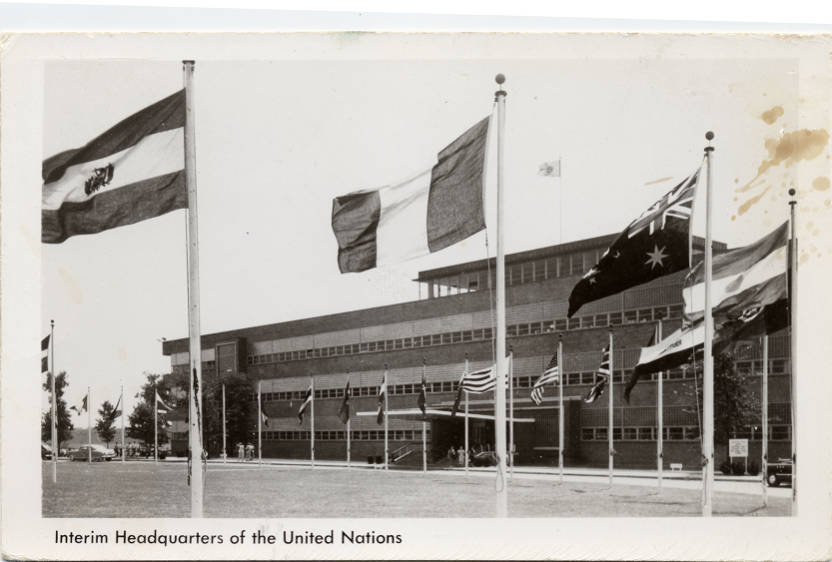The United Nations turns 80 today (June 26, 1945). Its charter, signed by 50 nations on June 26, 1945, established an organization dedicated to fostering peace, security and human rights. Emphasizing the dignity of all individuals, the charter aimed to prevent war, promote social progress, and uphold international law. Since then, the U.N. has grown to 193 member states, playing an essential role in the world. The 80th anniversary of the charter serves as a reminder of its significance and the commitment of nations to work together for the common good.
The quiet village of Lake Success played an oversized role in global diplomacy during one of the most pivotal moments in world history. Long before the U.N. found its permanent home along Manhattan’s East River, its earliest days unfolded here—in suburban Long Island.
From 1946 to 1951, Lake Success served as the temporary headquarters of the U.N., the fledgling international organization founded in the aftermath of World War II. The global body, established to foster peace, cooperation and human rights, needed an immediate base of operations while a permanent site was being selected and developed. The village’s serene surroundings and proximity to New York City made it a suitable, if unconventional, location.
The U.N. leased office space at the Sperry Gyroscope Company plant on Marcus Avenue, a sprawling defense industry complex that had expanded rapidly during the war. The building was retrofitted to accommodate international diplomats, secretariat staff and security personnel. What had been a hub for radar and military navigation systems became the birthplace of many formative U.N. debates and resolutions.
Over the next five years, Lake Success witnessed the shaping of key postwar initiatives. The Security Council and the General Assembly held meetings there, establishing early protocols for international peacekeeping, refugee support and nuclear disarmament. It was from Lake Success that the U.N. confronted some of the earliest crises of the Cold War, including tensions in Korea, Palestine and Berlin.
The village, previously known mostly for its private estates and golf clubs, adjusted to its new role on the world stage. Delegates from across the globe filled nearby hotels and homes. Local residents and business owners occasionally crossed paths with diplomats from as far as China, France and India. For a few brief years, the streets of Lake Success were an unlikely but vital center of international affairs.
The arrangement was always intended to be temporary. In 1947, the U.N. selected a site along the East River in Manhattan for its permanent headquarters, thanks in large part to a land donation by John D. Rockefeller, Jr. Construction began shortly afterward and by 1952, the Secretariat building was completed and operations fully relocated to New York City.
Though its moment in the diplomatic spotlight was brief, Lake Success holds a unique distinction as the first operational home of the U.N. The Sperry building, now part of a medical complex, stands as a quiet monument to that historic era.


































